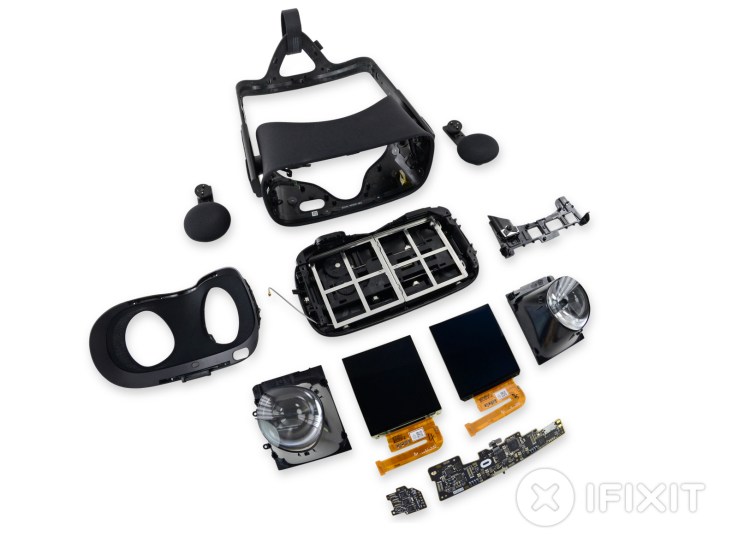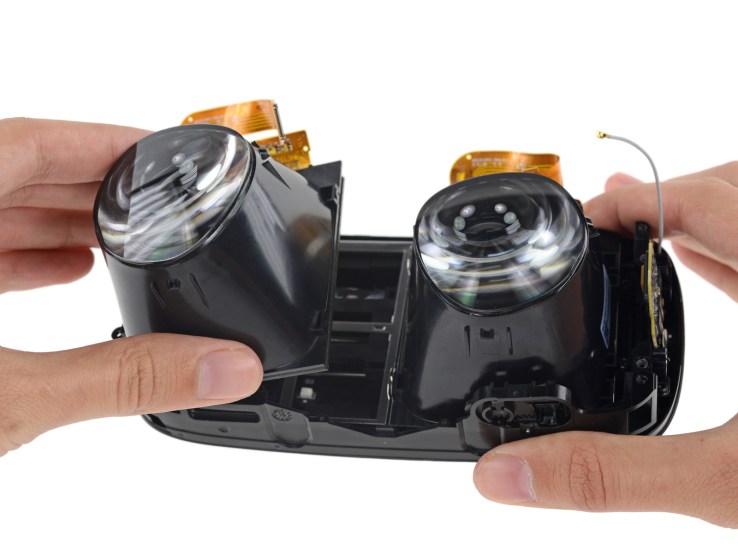
When a new category of gadget appears, it’s understandable when the vanguard devices aren’t the most well designed, or are resistant to disassembly and repair. Fortunately, that doesn’t seem to be the case with the first production VR headset from Oculus — in its teardown, iFixit found the device to be an elegant piece of engineering that doesn’t punish the user with exotic screw types or tamper-evident seals.
The Oculus Rift CV1 (consumer version one, don’t you know) is a massive improvement from the versions that I’ve tried — the early prototype years back (swathed in gaff tape) and the Crystal Cove milestone device. The teardown bears that out in a number of ways.
Importantly, the pieces users are most likely to want to swap out — headphones and facepad — are easily removed, making custom replacements a distinct possibility.
Deeper inside, the custom display and optical setup Oculus has created is shown for all to admire. The aspherical fresnel lenses and dual 456ppi OLED displays are cunningly designed to make you perceive an image just centimeters from your face as an endless landscape with infinite depth. Well, that’s the idea anyway — it’s up to the software engineers and environment designers to finish the job.
 There are lots of small solutions to fit different-sized heads, accommodate imperfect eyeballs, and generally make things as comfortable as possible for as many people as possible. Industrial designers will surely nod and stroke their beards or beardless chins upon observing some of these nicely turned mechanisms and space-saving tricks.
There are lots of small solutions to fit different-sized heads, accommodate imperfect eyeballs, and generally make things as comfortable as possible for as many people as possible. Industrial designers will surely nod and stroke their beards or beardless chins upon observing some of these nicely turned mechanisms and space-saving tricks.
iFixit’s repairability score of 7 reflects the fact that not every part can be easily replaced or serviced, though the most easily damaged or worn out are. Kudos to Oculus for putting together a device that embraces both ergonomics and accessibility.
Featured Image: iFixit


Comments are closed.